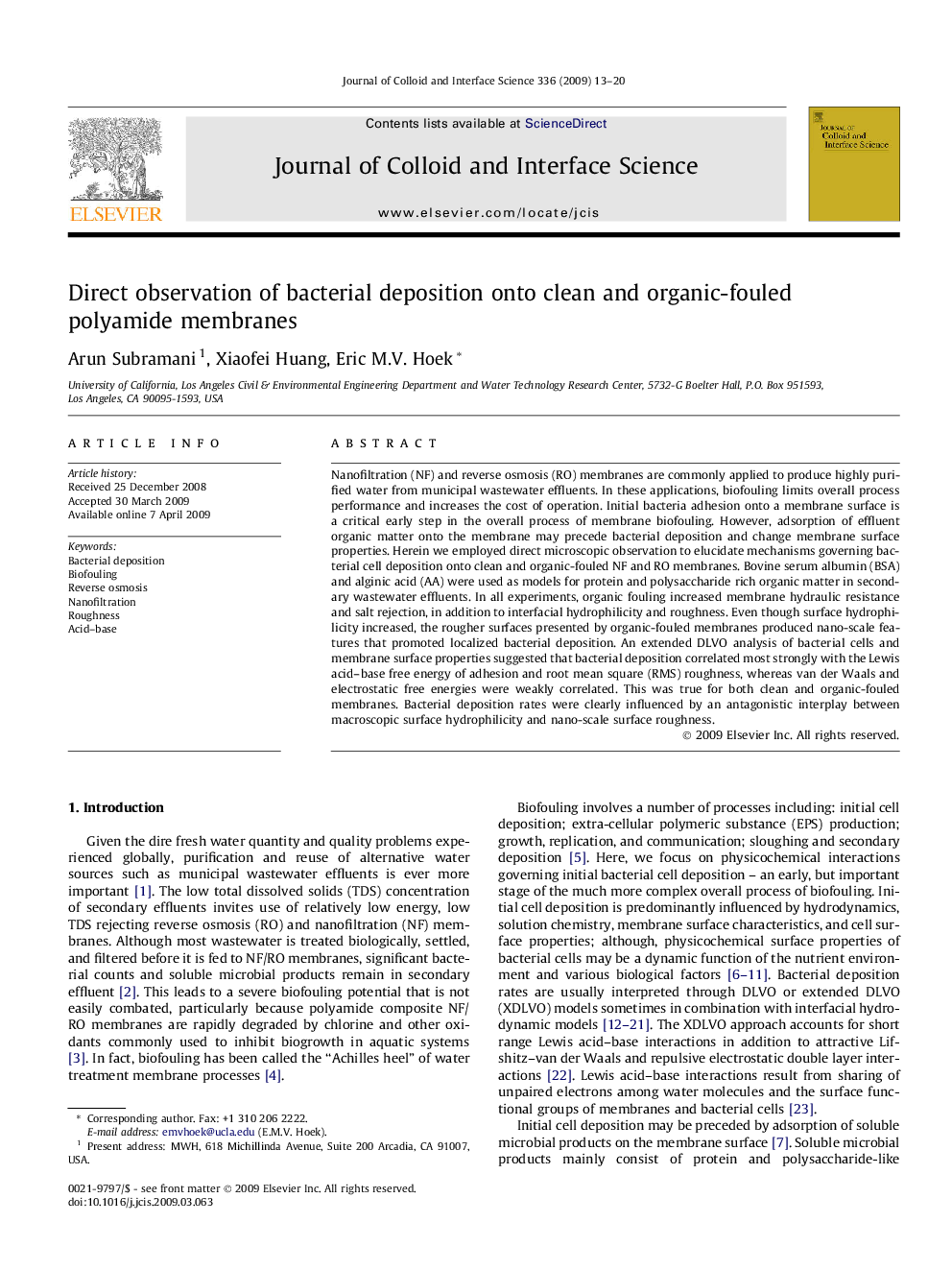| Article ID | Journal | Published Year | Pages | File Type |
|---|---|---|---|---|
| 610333 | Journal of Colloid and Interface Science | 2009 | 8 Pages |
Nanofiltration (NF) and reverse osmosis (RO) membranes are commonly applied to produce highly purified water from municipal wastewater effluents. In these applications, biofouling limits overall process performance and increases the cost of operation. Initial bacteria adhesion onto a membrane surface is a critical early step in the overall process of membrane biofouling. However, adsorption of effluent organic matter onto the membrane may precede bacterial deposition and change membrane surface properties. Herein we employed direct microscopic observation to elucidate mechanisms governing bacterial cell deposition onto clean and organic-fouled NF and RO membranes. Bovine serum albumin (BSA) and alginic acid (AA) were used as models for protein and polysaccharide rich organic matter in secondary wastewater effluents. In all experiments, organic fouling increased membrane hydraulic resistance and salt rejection, in addition to interfacial hydrophilicity and roughness. Even though surface hydrophilicity increased, the rougher surfaces presented by organic-fouled membranes produced nano-scale features that promoted localized bacterial deposition. An extended DLVO analysis of bacterial cells and membrane surface properties suggested that bacterial deposition correlated most strongly with the Lewis acid–base free energy of adhesion and root mean square (RMS) roughness, whereas van der Waals and electrostatic free energies were weakly correlated. This was true for both clean and organic-fouled membranes. Bacterial deposition rates were clearly influenced by an antagonistic interplay between macroscopic surface hydrophilicity and nano-scale surface roughness.
Graphical abstractAtomic force microscope surface analyses reveal that bacterial cells rapidly deposit onto organic-fouled polyamide membranes (left) because the fouled membrane surfaces are rougher than virgin polyamide membranes (right).Figure optionsDownload full-size imageDownload as PowerPoint slide
